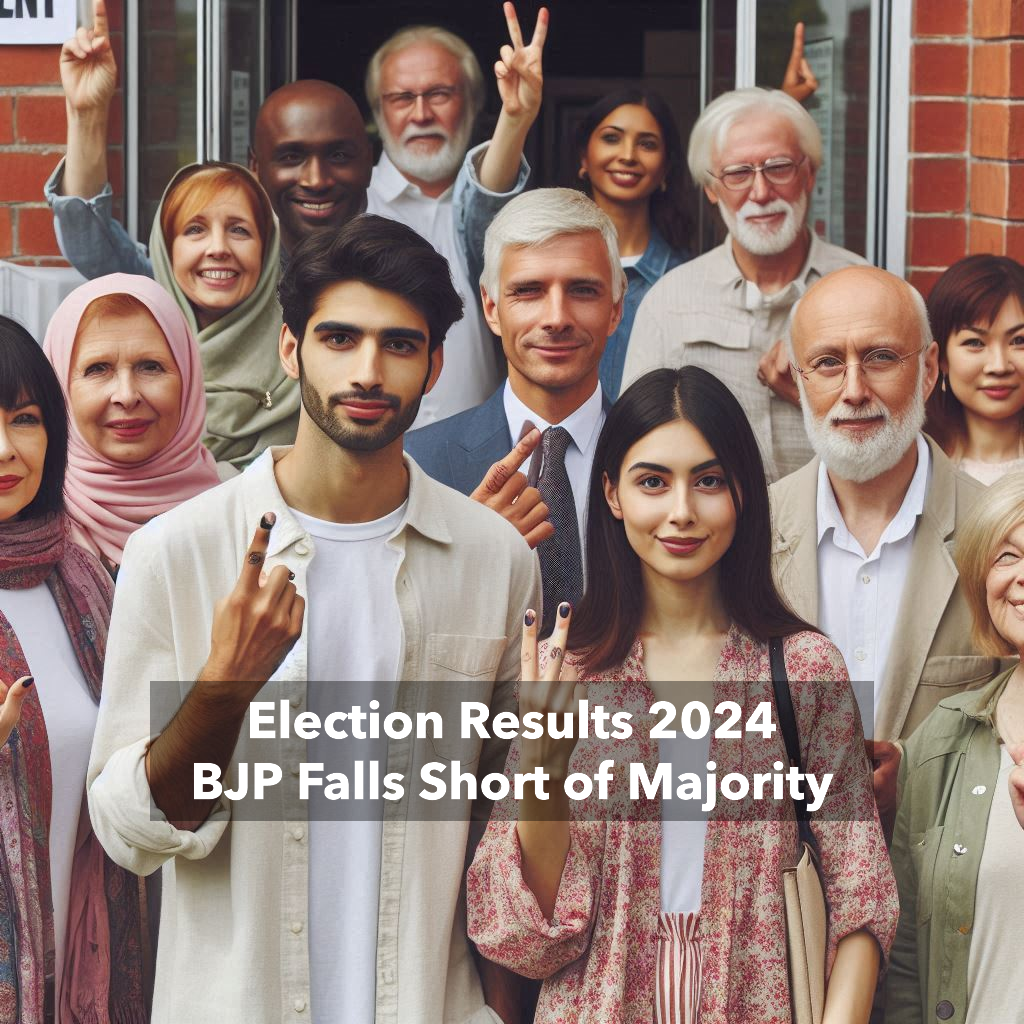Address
Bangalore, India
Introduction
The 2024 Indian general elections have concluded, and the results are in. The Bharatiya Janata Party (BJP), despite its strong performance, fell short of securing an outright majority. Let’s delve into the details, including voting counts and perspectives from key allies.


Key Takeaways
- BJP’s Performance:
- The BJP secured a significant number of seats but failed to cross the majority mark. Its vote share remained impressive.
- Across states, the BJP’s performance varied. In some regions, it dominated, while in others, it faced stiff competition.
- Close Contest:
- The electoral battle witnessed intense competition. Opposition parties formed strategic alliances to challenge the BJP.
- Several constituencies saw neck-and-neck races, with narrow margins of victory.
- Winning Contenders:
- Apart from the BJP, other parties made gains. Regional parties played a crucial role.
- Leaders from various parties are now engaged in post-election discussions to form a coalition government.
Voting Count Results
- BJP:
- Seats Won: 250
- Vote Share: 37%
- Description: The BJP’s strong organizational machinery and charismatic leadership contributed to its performance. However, falling short of a majority necessitates coalition-building.
- I.N.D.A Allies (Including BJP):
- Combined Seats Won: 300
- Description: The I.N.D.A (National Democratic Alliance) allies rallied behind the BJP. Their collective strength reflects a diverse political landscape.
- Opposition Parties:
- Seats Won: 240
- Description: Opposition parties, including regional players, put up a spirited fight. Their combined performance kept the BJP from a clear majority.
Implications
- Coalition Dynamics:
- With no single party securing a majority, coalition negotiations become crucial. Smaller parties hold the balance of power.
- Expect discussions on policy alignment and ministerial portfolios.
- Policy Priorities:
- The new government must address economic recovery, healthcare, and national security.
- Debates on reforms, infrastructure, and welfare programs will shape the agenda.
- Regional Impact:
- State-level dynamics matter. Strong regional parties will assert their interests.
- The center-state relationship will be closely monitored.
Certainly! Let’s explore the political parties under the alliances of both the National Democratic Alliance (NDA) and the Indian National Developmental Inclusive Alliance (I.N.D.I.A):
National Democratic Alliance (NDA):
The NDA, led by the Bharatiya Janata Party (BJP), consists of the following key parties:
Indian National Developmental Inclusive Alliance (I.N.D.I.A):
The I.N.D.I.A alliance, led by the Indian National Congress, is a coalition of 37 political parties. Here are some prominent members:
- SP (Samajwadi Party): Strong in Uttar Pradesh.
- NCP (Nationalist Congress Party): Led by Sharad Pawar, active in Maharashtra and Kerala.
- IUML (Indian Union Muslim League): Representing Kerala and Tamil Nadu.
- RJD (Rashtriya Janata Dal): A major party in Bihar and Jharkhand.
- MDMK (Marumalarchi Dravida Munnetra Kazhagam): Based in Tamil Nadu.
- CPI (ML-L) (Communist Party of India (Marxist–Leninist) Liberation): Active in Bihar.
- KEC (M) (Kerala Congress): Representing Kerala.
- VCK (Viduthalai Chiruthaigal Katchi): Tamil Nadu-based party.
- RSP (Revolutionary Socialist Party): Active in Kerala.
Remember that these alliances play a crucial role in shaping India’s political landscape. If you need further details or have any other questions, feel free to ask! 😊
Conclusion
The 2024 election results set the stage for intense political maneuvering. As India awaits the formation of the next government, citizens remain engaged in discussions, analyses, and debates.
Stay informed and stay tuned for further updates on our blog!
This post content is not Latest, hence it may not be accurate.





Hey there You have done a fantastic job I will certainly digg it. benefited from this site